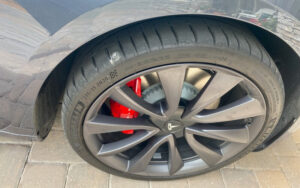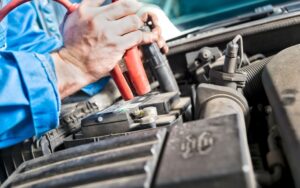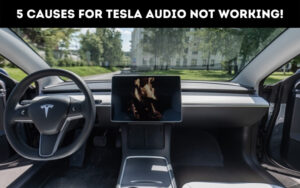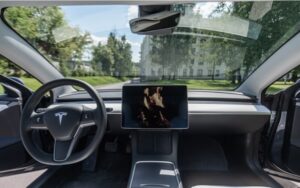How Often Should I Charge My Tesla? (100% Or Less?)
Last updated on April 18th, 2023 at 11:18 pm
Tesla is an automotive company that designs and manufactures electric vehicles and battery grids. Tesla’s electric vehicles offer driving ranges of over 300 miles on a single charge.
One of the questions Tesla owners regularly ask is how often they can safely charge their Tesla’s battery.
You can charge your Tesla as often as you want, but you should ensure you keep the battery percentage between 30-80 percent. The distance you drive daily should dictate how often you charge your Tesla.
When Should I Fully Charge my Tesla?
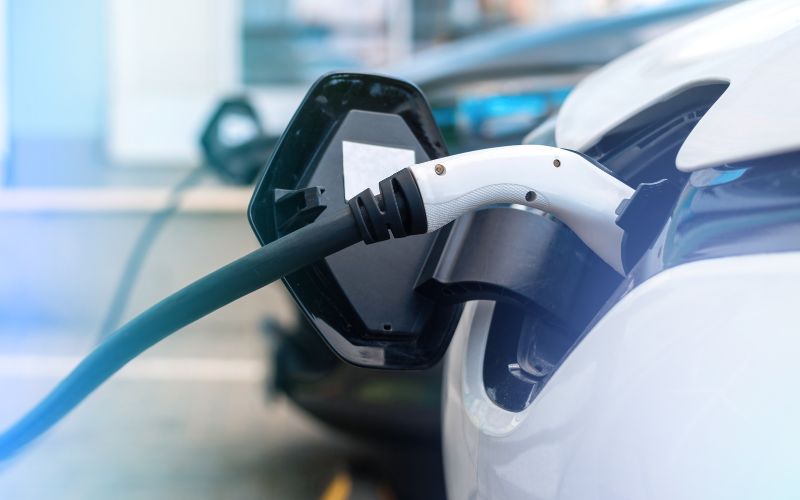
The proper time to fully charge your Tesla is when you go on a long trip with fewer charging stations on the road.
As I mentioned above, the ideal percentage for electric vehicles using lithium-ion batteries is between 30-80 percent.
Lithium-ion batteries degrade faster if kept at 100 percent for extended periods.
You can reduce your battery degradation by customizing your Tesla BMS and setting your maximum charging time to 80%.
Here are some of the situations that will require you to charge your tesla batteries fully:
#1. Going On a Long Trip
If you plan on traveling to another state or taking a long trip across the country, it would be best to charge your tesla battery 100 percent.
It will help if you plan your journey before traveling in your electric car. Inadequate planning of your journey can cause your car to run out of battery, stranding you in the middle of nowhere.
It would be best if you stopped at the various superchargers on the highway for a quick top-off of your car before continuing your journey.
#2. Unfavorable Weather Conditions
Lithium-ion batteries in electric cars lose electric charge faster as temperature decreases, and this will cause your car range to drop drastically.
If there is heavy snowfall or a blizzard, you are advised to fully charge your Tesla before driving your car.
It would be dangerous if you ran out of charge and became stranded in the middle of a snowstorm without heating.
#3. LFP Batteries
LFP or lithium iron phosphate batteries (LIFEPO4) is a lithium battery that doesn’t degrade if charged 100 percent.
LFP batteries are used in most rear-wheel models of Tesla cars and those sold in the Chinese market.
If your Tesla uses LFP batteries, you can fully charge your Tesla without fear of degradation.
#4. Recreational Driving
Suppose you plan on taking your Tesla to the track for a bit of drag racing or a spin. It would be best if you topped up your Tesla battery.
Tesla automatically reduces your car performance if your tesla battery is low. Charging your tesla battery will ensure your card performs optimally.
Does Fully Charging my Tesla Damage the Battery?
Yes, charging your Tesla’s battery to 100 percent will damage your battery but not in the way you think.
Electric car batteries (li-ion cells) degrade faster if they are kept at full charge for extended periods.
The sweet spot for electric car battery storage is around 50 percent charge, but keeping your battery at 50 Percent is not feasible.
Drivers are advised to set their Tesla’s charging limit to 80 percent.
Elon Musk has confirmed this on Tesla’s website, and Tesla has an option to limit your Tesla charge to 80 percent.
Here are some habits that can damage and degrade your Tesla battery.
#1. Frequent Supercharging
Tesla superchargers are fast charging stations that can charge from 0 to 100 in under an hour. Superchargers are a lifesaver when you are going on long trips.
Sadly lithium-ion batteries do not handle fast charging well. Regular supercharging will increase cell degradation and reduce the lifespan of your car battery pack.
It would be best if you used a standard 110v or 240v outlet to charge your Tesla and only use superchargers when they are urgently needed.
#2. Driving in Bad Weather
Driving in extreme weather, whether hot or cold, is not healthy for your tesla battery.
Cold weather causes electric car batteries to die faster, while hot weather can overheat your batteries, shortening their lifespan.
It will help if you find an alternative form of transport in any extreme weather event.
#3. Bad Driving Practices
Bad driving practices like overspeeding and frequent start and stops are a sure way of shortening the lifespan of your tesla batteries.
Lithium-ion cells might have a very high energy density, but they do not handle quick discharges very well.
Sudden accelerations and driving at high speeds will rapidly discharge your battery, shortening its lifespan.
#4. Turning Off Brake Regen
Brake regeneration is a feature in electric cars that converts the braking energy of the car into electrical energy to charge the car battery.
Brake regen increases your tesla efficiency and reduces the number of time your car spends charging. Brake regen can increase your tesla efficiency by up to 30 percent when activated.
What Percentage Should I Charge my Tesla?
Tesla’s batteries are best kept within the range of 30-80 percent charge for battery longevity.
Anyone who uses smartphones has once heard that charging your phone 100 percent is bad for your battery health.
The same applies to electric car batteries; allowing your Tesla’s battery to die or keeping it below 30 percent negatively affects your battery health.
The best battery percentage for electric vehicles is 80 percent on the high and 30 percent on the low sides. You will experience lower mileage if you do not fully charge your Tesla battery.
You can extend your range by performing the following.
#1. Remove Excess Weight
The more mass your Tesla carries, the less range you will get out of your batteries. It would be best if you removed any excess load you are carrying.
You would severely reduce your driving efficiency if you were hauling excess weight around your Tesla.
#2. Avoid Over Speeding
Electric car batteries last longer the slower you drive. Studies have shown that the energy spent accelerating a car from 60 mph increases exponentially the faster you go.
Driving at high speeds seriously drains electric car batteries and reduces the estimated distance you can travel.
It would be best if you drove at low speeds on the roads and avoided hard starts and stops while driving.
#3. Do not Drive in Snowy Weather.
Cold weather can cause your tesla battery to run down quickly. Bad weather, like blizzards, is bad for your battery and can cause you to get stranded in the middle of a snowstorm.
The best order of action you should take would be to fully charge your tesla battery before you go out or avoid going out at all.
Can I Leave my Tesla Charged for a Week?
You can leave your Tesla plugged in for weeks and even months at a time with no problems.
Teslas have an advanced BMS (battery management system) that controls and regulates the car charging process.
Tesla BMS controls the car’s charges and prevents the batteries from overcharging and deep discharging. There is nothing wrong with plugging in a tesla for a week or more.
Here are some of the advantages of leaving your Tesla plugged in.
#1. Reduces Charge Cycles
The more discharge and charges your Tesla undergoes, the shorter your tesla battery life gets.
Keeping your car plugged in for a week will ensure the battery stays full at the selected level.
#2. Keeps Battery at Optimal Charge Levels
Storing your Tesla with a battery charge above 80 percent or below 30 percent is detrimental to the battery’s health.
You can set your Tesla to maintain your battery percentage at 80 percent for the duration of the entire trip.
#3. Improves your Car Security
Tesla has a security feature it calls sentry mode that allows you to see what is happening around your car in real-time.
The sentry mode is a nice feature that provides extra security for your Tesla, especially if you park your car in a public parking space.
The main problem is that sentry mode consumes a lot of power, and it would be best if you plugged your car while sentry mode is turned on.
How to make Tesla Battery Last Longer
You can make your tesla battery last longer by turning on brake regen and driving at low speeds.
Tesla has different car models with varying battery capacities and extra miles they can travel on a single charge.
Tesla offers about three different cars in each generation. The base models are cheaper with an average range, while the plaid models have bigger batteries and accelerate much faster.
A table shows some Tesla car models and their effective range on a single charge.
| Tesla Models | Distance on a Single Charge (mi) |
|---|---|
| Tesla Model Y | 303 mi |
| Tesla Model 3 | 315 mi |
| Tesla Model X | 333 mi |
| Tesla Model S plaid | 348 mi |
If you want to get the most out of your Tesla battery bank, you can attempt any of the following practices.
- Charge to 80 percent
- Turn on the regenerative braking
- Avoid extreme weather
- Turn off sentry mode
Conclusion
You can charge your Tesla as much as required, but you must ensure you follow charging practices that maintain your battery lifespan.
Bad habits like frequent supercharging, driving in cold weather, and allowing your battery to fall below 30 percent should be stopped.
It would be best if you practice safe practices like using brake regen, topping off overnight, and limiting your battery to 80 percent charge.

Hey, I’m Michael Davis, a 35-year-old with a degree and a love for cars and tech. Since I was a kid, cars have been my thing—so much that I even thought they ran on magic beans! Fast forward, and I’ve built Vehicle Army, your one-stop-shop for easy-to-understand car facts.

